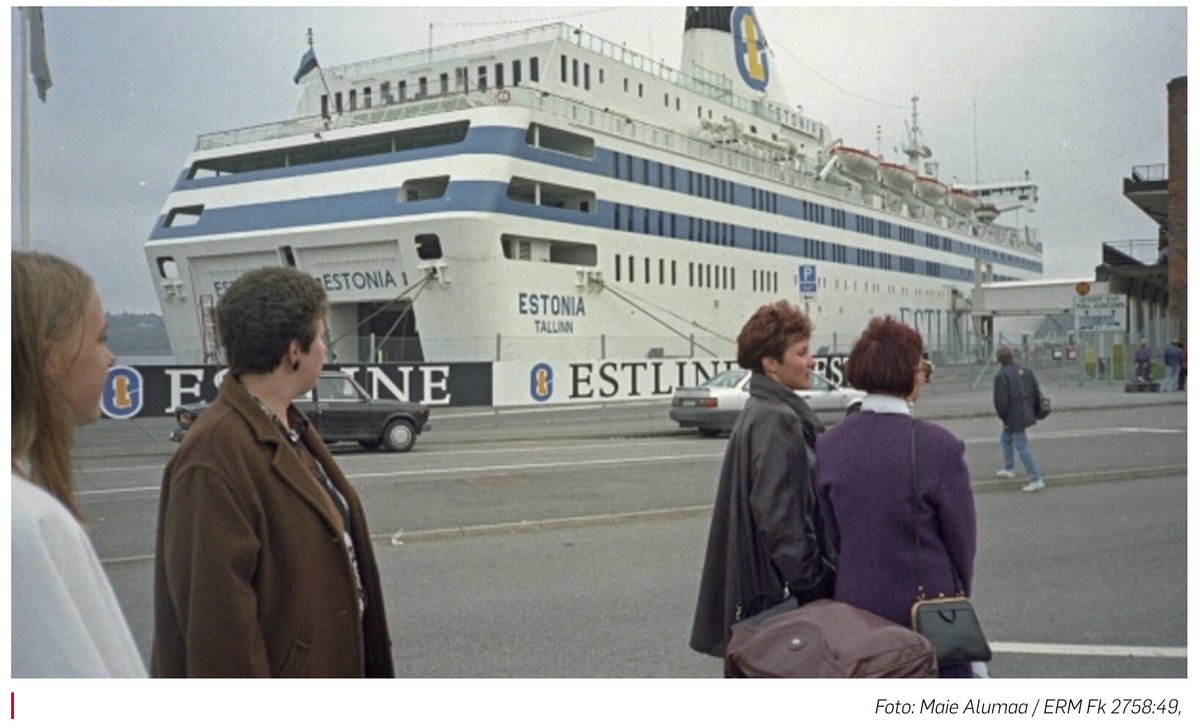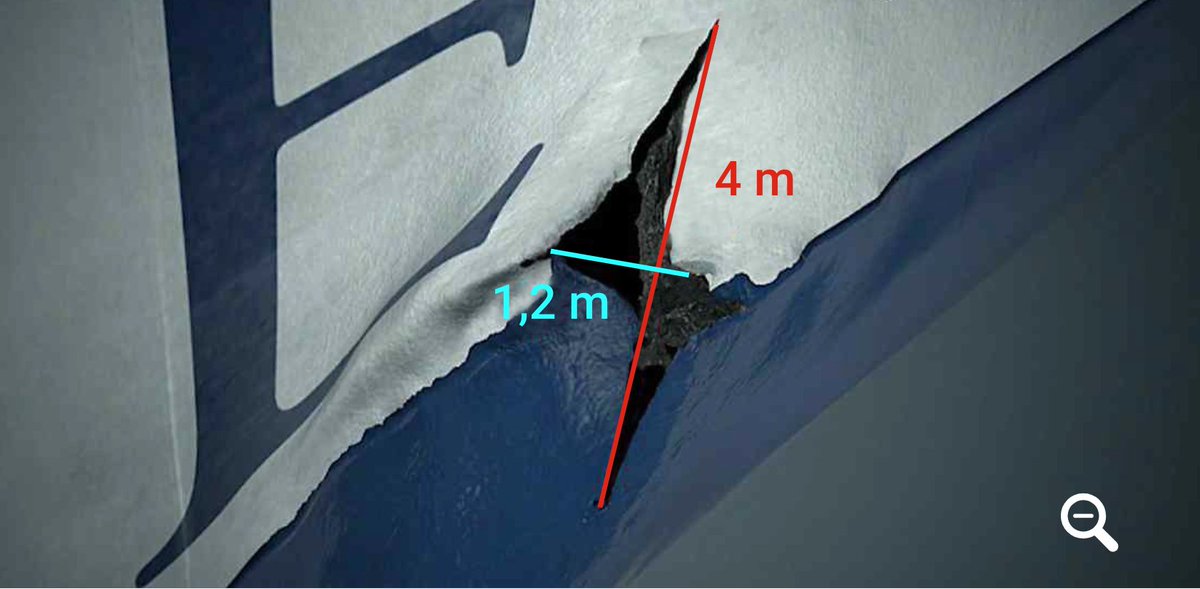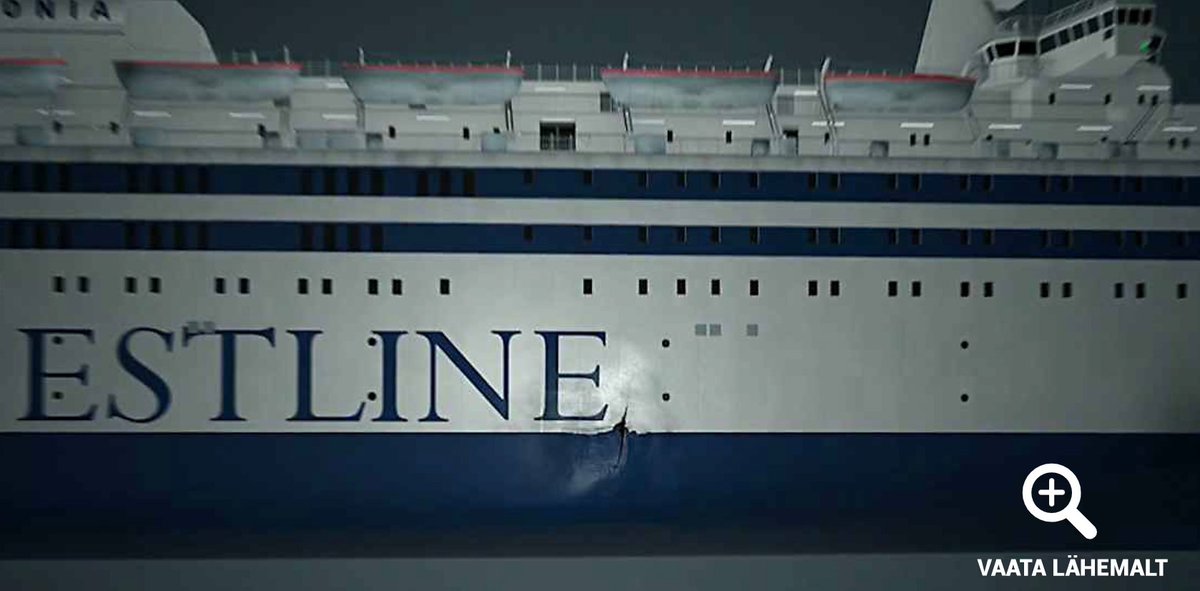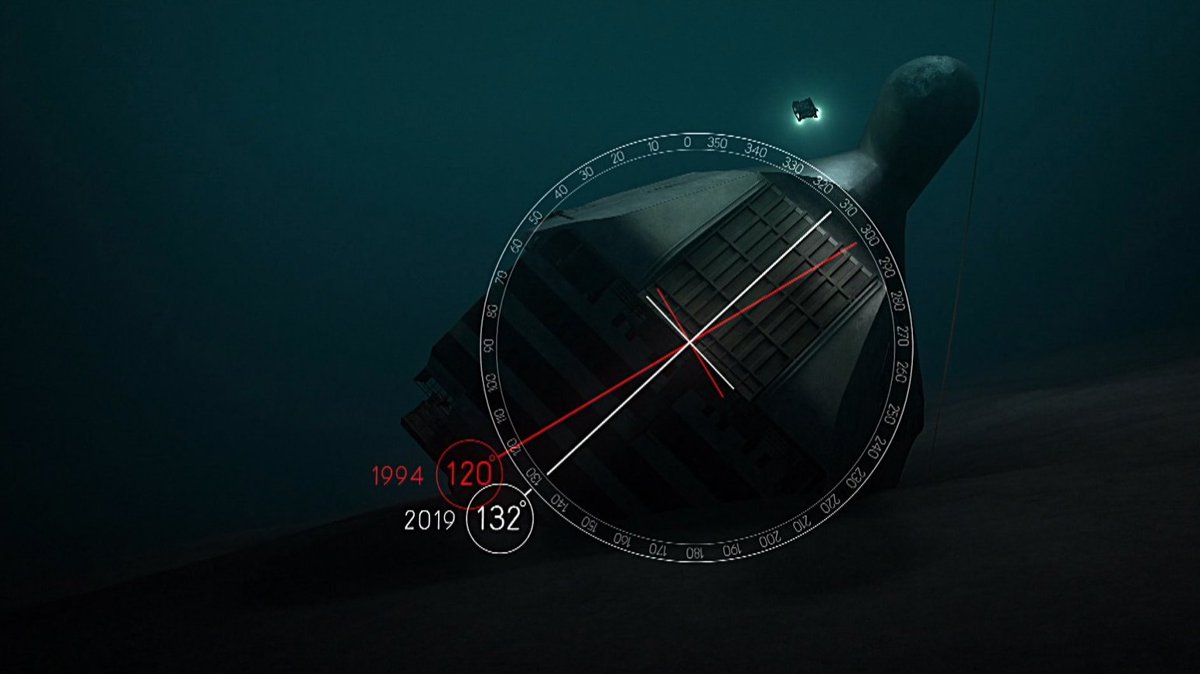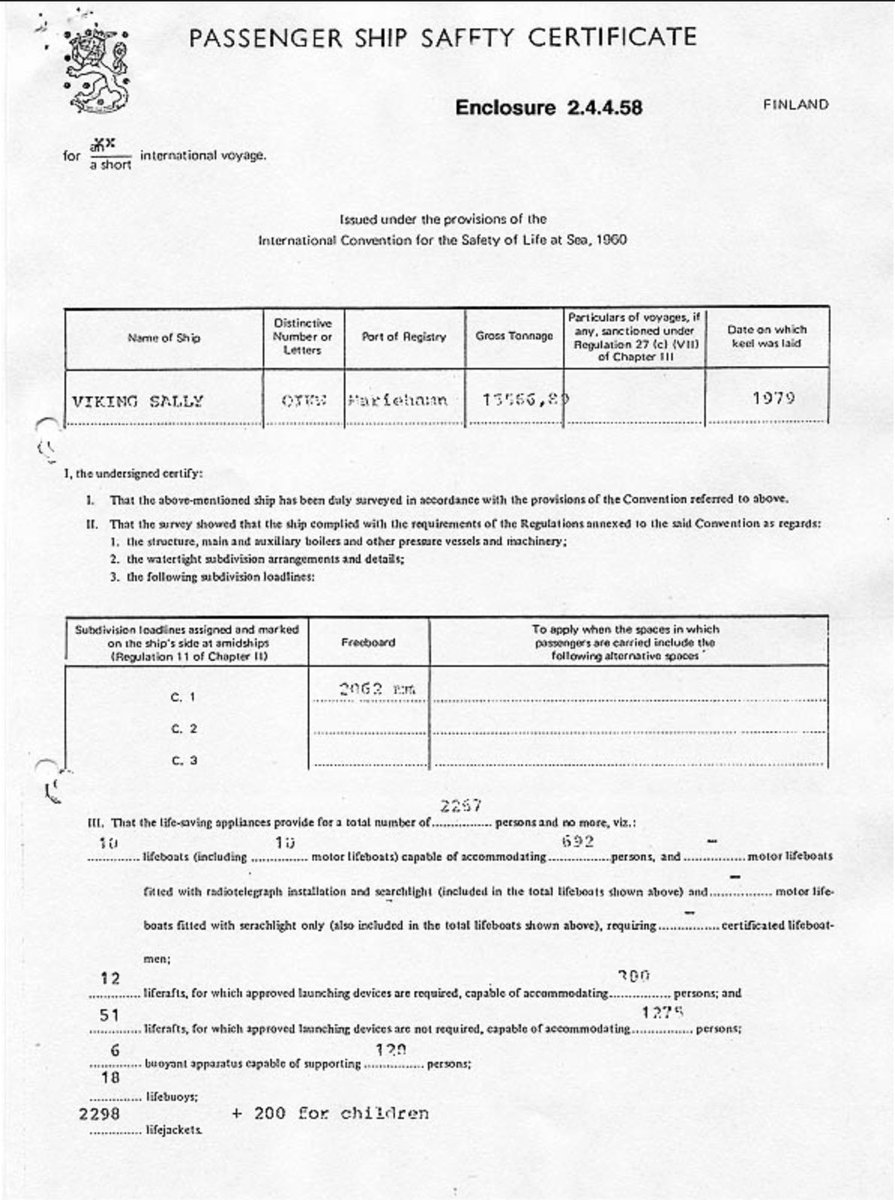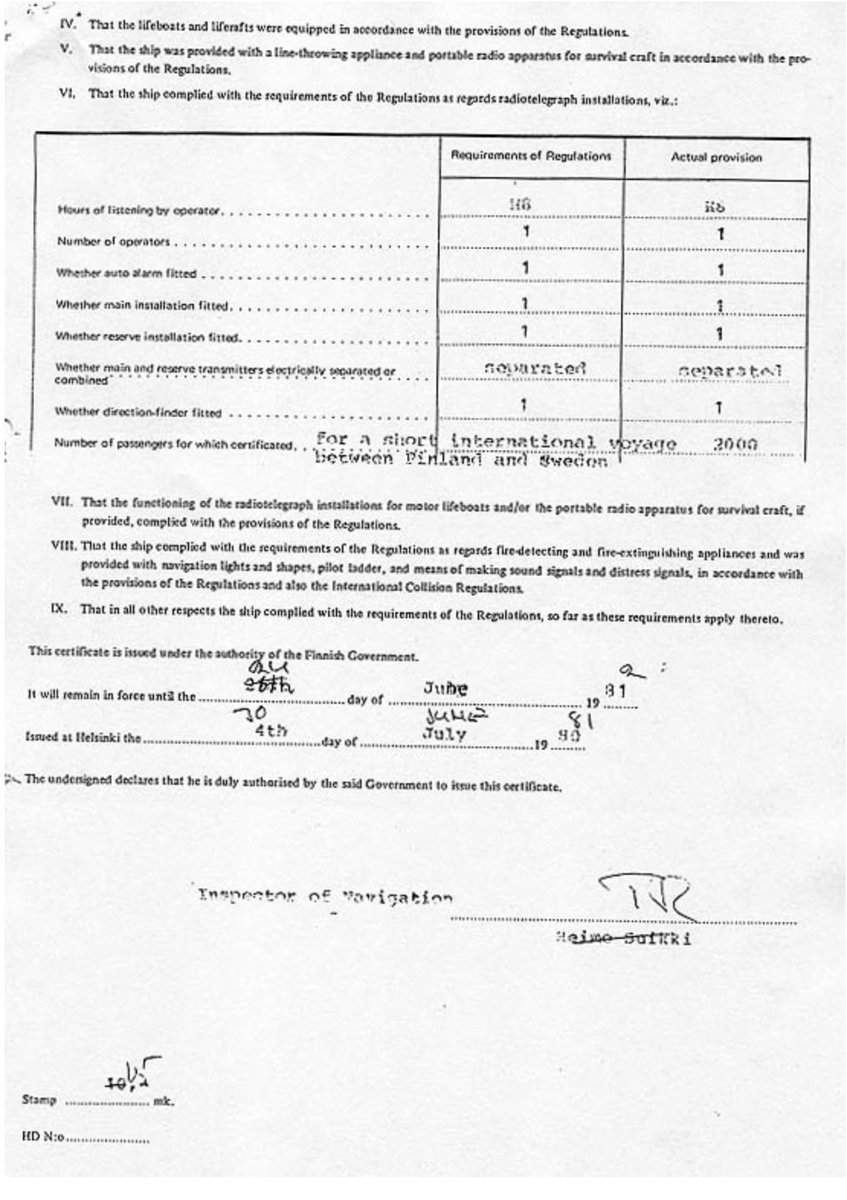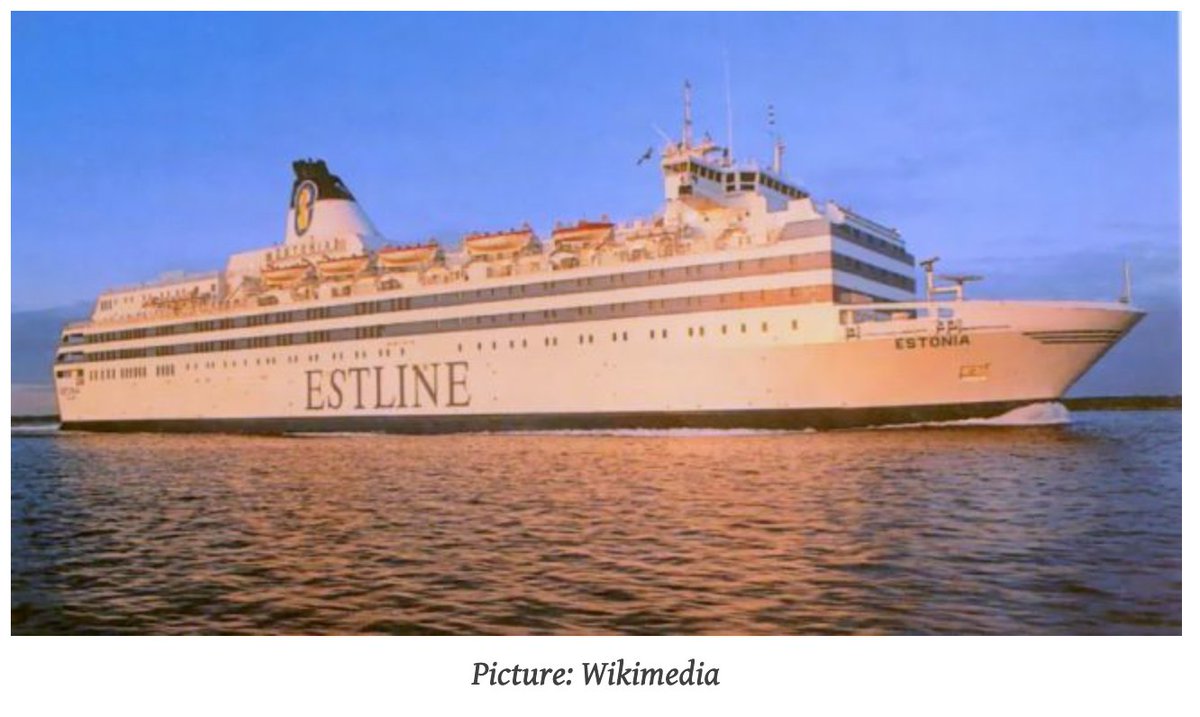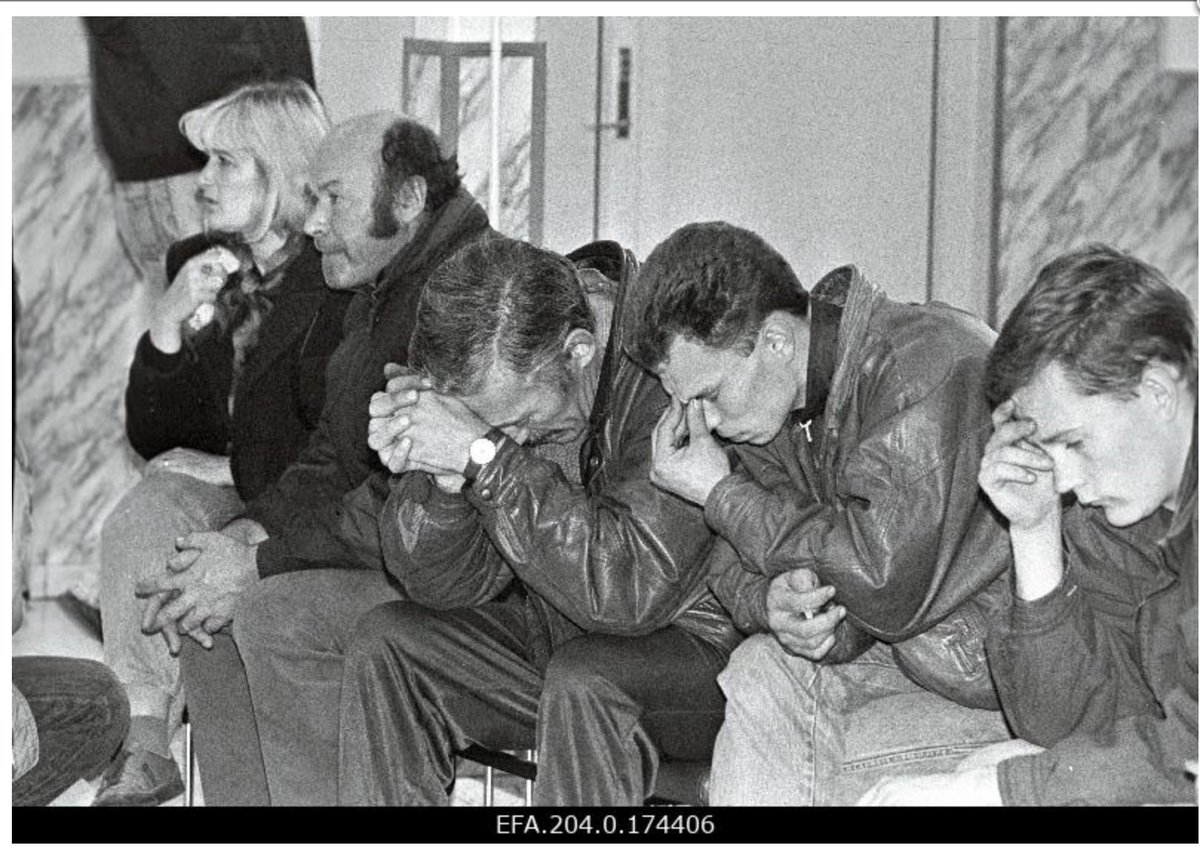1/ Why we still have to talk about #MSEstonia #Estoniagate and reveal some disturbing forgotten facts LONG THREAD
2/ On the 28th of Sep, 1994 #MSEstonia sank on its way from Tallinn to Stockholm, killing 852 people. Only 137 of the 989 passengers and crew on board survived in Europe’s worst peacetime maritime disaster since the Second World War http://shorturl.at/uvPV7 ">https://shorturl.at/uvPV7&quo...
3/ In 1995, Sweden, Finland, Estonia, Latvia, Poland, Denmark, Russia and the UK signed a controversial treaty declaring the accident site a marine grave. This, in effect, criminalised any exploration of the wreckage. There is no other example of “marine grave” in the world.
4/ In 1996 Sweden poured tons of sand and stones over the wreckage, stoking rumours that there was something that had to be hidden forever. Sweden always had an upper hand in dealing with the wreckage, although the accident occurred in international waters.
5/ The 1997 report by "Joint Accident Investigation Commission" (JAIC) set up by Estonia, Sweden and Finland concluded that the locks on the bow visor had failed, causing the visor to fall off and expose the ramp. The car deck flooded and the ferry sank in less than an hour.
6/ Many conspiracy theories have emerged since day one, trying to link the disaster to ex-Soviet military cargo smuggled on board, collision with a submarine or even an explosion.
7/ It hasn& #39;t helped that Sweden has classified some documents and edited the footage of the official diving expedition.
8/ A new Discovery Networks documentary by Henrik Evertsson “Estonia: the Find that Changes Everything” has further fuelled the conspiracy mill. The filmmakers (sued now by Sweden) defied the “marine grave” law and sent an ROV to film the wreckage https://www.youtube.com/watch?v=rOxNj4ylB1Q">https://www.youtube.com/watch...
9/ They found a hitherto unrecorded hole in the hull, 4 metres long and 1,2 metres at its widest part.
10/ However, even the experts questioned in the series seem to rule out both the submarine collision and explosion theory. The hole is almost above the waterline (too high for a submarine) and looks different from damage from explosions.
11/ Most probably the hole, or rather a crack, was caused by a 12-000 ton ferry colliding with the seafloor after the accident. Remember that “Estonia” was capsized. (Photos: screenshots from the series)
12/ A group of Estonian maritime engineering experts consulted by the filmmakers also saw their raw footage that included another, smaller crack in the hull. This further indicates it& #39;s damage from the ferry& #39;s own weight. https://www.err.ee/1142074/estonia-keres-on-mitu-auku">https://www.err.ee/1142074/e...
13/ The series gives a nice chronological overview of the disaster and its following events, and there are heartfelt interviews with the survivors and victims& #39; relatives.
14/ However, keeping the focus narrowly on the hole, the series fails to address the bigger picture and potential offenders behind the MSEstonia disaster. It& #39;s complicated and there are many particles.
15/ MS Estonia was built in 1980 by a German shipyard Meyer Werft. Its first name was Viking Sally, belonging to the Finnish company Rederi AB Sally (Viking Line consortium).
16/ The ship was built under the supervision of the Classification Society Bureau Veritas and the Finnish Board of Navigation (F.B.N.) It was issued the class notation "I 3/3 E + Passenger Ferry Deep Sea Ice lA (Aut)". https://bit.ly/3iBpX5i ">https://bit.ly/3iBpX5i&q...
17/ The shipyard offered to make adjustments to the initial design and install the "partial collision door" required by SOLAS. The buyer did not want to include them as they were not necessary for its intended trips in coastal waters.
18/ The specification agreement clarified:
"Partial Collision Door for the intended service not required by F.B.N." https://bit.ly/3loQtk5 ">https://bit.ly/3loQtk5&q...
"Partial Collision Door for the intended service not required by F.B.N." https://bit.ly/3loQtk5 ">https://bit.ly/3loQtk5&q...
19/ In July 1980 the ship got its first permanent PSSC - it was restricted to "Kustfart mellan Finland och Sverige", i.e. "coastal trade between Finland and Sweden".
20/ This should have ended, however, when the issuance of "exemption certificates" became mandatory in 1985/86 and copies had to be sent to IMO.
21/ Even when the vessel& #39;s name was changed to Wasa King, the F.B.N. continued to issue the same PSSC& #39;s although the vessel was regularly more than 20 nautical miles from the nearest land on the leg Sundsvall-Vaasa.
22/ The granting of exemptions was no more permissible according to SOLAS and the F.B.N. should have required the installation of a "partial collision door" but the vessel kept sailing with the same worded PSSC as first issued in 1980.
23/ In 1993 the ferry was bought by Estline (jointly owned by the Estonian state and a Swedish company Nordström & Thulin) and named MS Estonia. It had to travel between Stockholm and Tallinn, hence also leaving the 20 nautical mile range of protected coastal waters.
24/ Just like the Finns, also the new Swedish technical managers found no point in upgrading and repairing the ferry to meet the SOLAS requirements.
25/ The Swedish flag Nord Estonia, owned by Nordström & Thulin, the technical managers and co-owners of MS Estonia, had sailed between Stockholm and Tallinn for about 2 years without having the upper extension of the collision bulkhead above bulkhead deck at the location…
26/ …required by SOLAS and without having a "partial collision door" but with an unrestricted PSSC issued and annually renewed by Sjöfartsverket. This was called "& #39;The General Scandinavian Practice" https://bit.ly/3dcxbvi ">https://bit.ly/3dcxbvi&q...
27/ The previous Finnish operators had reported a list of deficiencies to the new owners. But Nordström & Thulin decided to ignore the “to-do” list.
28/ Acting as mandatory of the Estonian National Maritime Board (ENMB), Bureau Veritas on 7.2.1993 issued an Interim Passengership Safety Certificate for MS Estonia. This was done in obvious violation of the regulations of SOLAS.
29/ In 2019, after a 22-year-long court case, the French court ruled that there wasn& #39;t enough evidence for the criminal negligence of Bureau Veritas... https://news.err.ee/963201/french-court-rejects-estonia-ferry-disaster-damages-claim">https://news.err.ee/963201/fr...
30/ Under the Finnish flag, the visor and ramp had been maintained by specialists at MacGregor Group, but Nordström & Thulin cancelled the contract, presumably to cut costs. From now on, the Estonian crew had to do the maintenance of the visor. P 3.3.6 in https://bit.ly/3ddqBFc ">https://bit.ly/3ddqBFc&q...
31/ In 1994 the port outer hinge of the bow ramp became twisted, couldn& #39;t be secured properly and lost its water-tightness. https://bit.ly/33xO00F ">https://bit.ly/33xO00F&q...
32/ Water from the filled visor started entering the car deck, despite the crew plugging the gaps with sheets and mattresses https://ekspress.delfi.ee/kuum/graafik-estonia-ehitaja-versioon-laeva-parem-kulg-vois-lekkida?id=87518029">https://ekspress.delfi.ee/kuum/graa...
33/ Two Swedish inspectors were training future Estonian inspectors on board of MS Estonia just a few hours before its last voyage in a test “port state control”. They noted the poor state of the visor and ramp, as well as other critical issues. https://bit.ly/2GpQx4t ">https://bit.ly/2GpQx4t&q...
34/ There were five issues marked with code 17 meaning that the vessel should not have been allowed to leave the port without those mistakes being fixed.
35/ The bemused inspectors called their superiors, but they were told they had no authority over an Estonian flagged vessel located in Estonia. It was up to the Estonians to decide whether MS Estonia was seaworthy.
36/ The Swedes could have said that they would not let MS Estonia enter Stockholm in this condition, but they didn& #39;t.
Fine, the Estonian officials had to decide although they were still trainees. MS Estonia set sail...
Fine, the Estonian officials had to decide although they were still trainees. MS Estonia set sail...
37/ Despite the rough seas, the crew ran the engines on full power. https://bit.ly/30H12Hn ">https://bit.ly/30H12Hn&q...
38/ On the next day, after hearing about the disaster, the Swedish inspectors and their Estonian trainees embellished their report. The original was later leaked to the Swedish media by The Independent Fact Group. https://bit.ly/30KAq8h ">https://bit.ly/30KAq8h&q...
39/ 852 people lost their lives and nobody seems to be held accountable. Why did the officials issue wrong certificates? Why did the owners postpone urgent repairs? Was profit more important than safety? #Estoniagate #MSEstonia
40/ @threadreaderapp unroll

 Read on Twitter
Read on Twitter